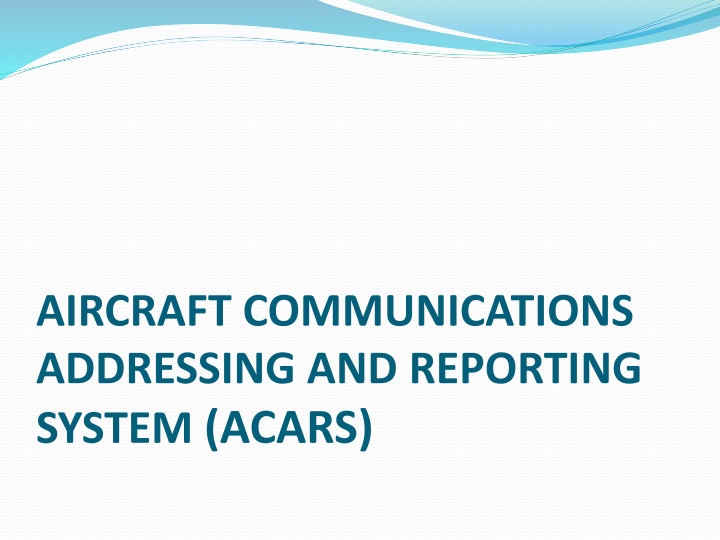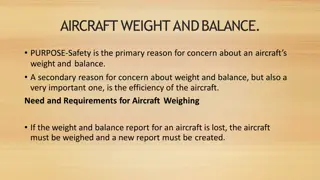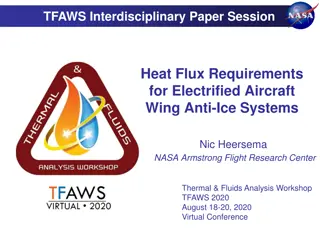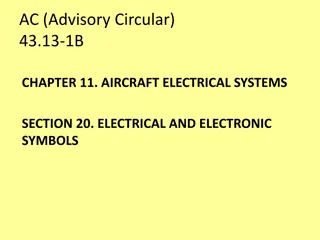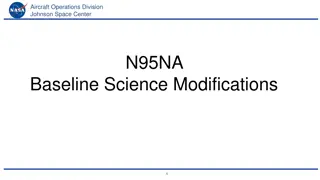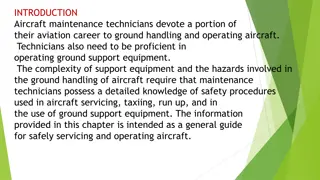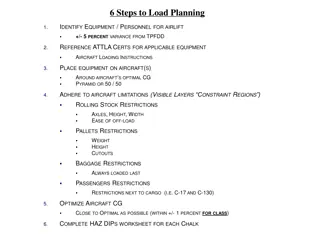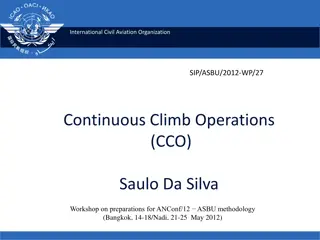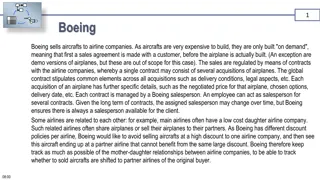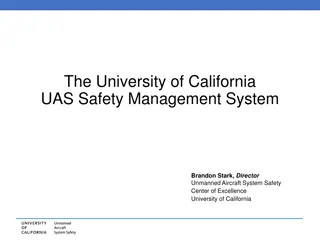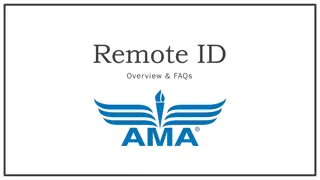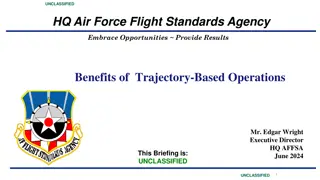Introduction to Aircraft Communications Addressing and Reporting System (ACARS)
Aircraft Communications Addressing and Reporting System (ACARS) is a digital data link system used for transmitting short messages between aircraft and ground stations via air band radio or satellite. This system has revolutionized aviation communication by enabling efficient and secure exchange of information between air and ground personnel. ACARS encompasses on-board equipment, ground units, and service providers to facilitate seamless communication in the aviation industry. Messages sent through ACARS can be pre-configured for automatic delivery to the intended recipients, streamlining operations and enhancing safety.
Download Presentation

Please find below an Image/Link to download the presentation.
The content on the website is provided AS IS for your information and personal use only. It may not be sold, licensed, or shared on other websites without obtaining consent from the author.If you encounter any issues during the download, it is possible that the publisher has removed the file from their server.
You are allowed to download the files provided on this website for personal or commercial use, subject to the condition that they are used lawfully. All files are the property of their respective owners.
The content on the website is provided AS IS for your information and personal use only. It may not be sold, licensed, or shared on other websites without obtaining consent from the author.
E N D
Presentation Transcript
AIRCRAFT COMMUNICATIONS ADDRESSING AND REPORTING SYSTEM (ACARS)
In communications addressing and reporting system is a digital data link system for transmission of short messages between aircraft and ground stations via air band radio or satellite. Prior to the introduction of data link in aviation, all communication between the aircraft and ground personnel was performed by the communication, using eitherVHF or HF voice radios. In many cases, the voice-relayed information involved dedicated radio operators and digital messages sent to an airline teletypesystemorsuccessorsystems. aviation, ACARS an acronym for aircraft flight crew using voice
ACARS as a term refers to the complete air and ground system, consisting of equipment on board, equipment on the ground, and a service provider. On-board ACARS equipment consists of end systems with a router, which routes messages through the air-ground sub network. Ground equipment is made up of a network of radio transceivers managed by a central site computer called AFEPS (ARINC Front End Processor System), which handles and routes messages. Generally, ground ACARS units are either government agencies such as the FAA, an airline operations headquarters, or, for small airlines orgeneral aviation, a third-party subscription service. Usually government agencies are responsible for clearances, while airline operations handle gate assignments, maintenance, and passenger needs.
Ground system provision is the responsibility of either a participating ANSP(Air Navigation Service Provider ) or an aircraft operator. Aircraft operators often contract out the function to either DSP or toa separate service provider. Messages from aircraft, especially automatically generated ones, can be pre-configured according to message type so that they are automatically delivered to the appropriate recipient just as ground-originated messages can be configured to reach the correct aircraft. The ACARS equipment on the aircraft is linked to that on the ground by the data link service provider.
Because the ACARS network is modeled after the point-to-point telex network, all messages come to a central processing location to be routed. ARINC and SITA are the two primary service providers, with smaller operations from others in some areas. Someareas have multipleservice providers.
ACARS messages may be of three broad types: Air traffic control messagesare used to request or provide clearances. Aeronautical operational control Airline administrative control Control messages are used to communicate between the aircraft and its base, with messages either standardized according to ARINC Standard 633, or user-defined in accordance with ARINC Standard 618.The contents of such messages can be OOOI events, flight plans, weather information, equipment health, status of connecting flights, etc.
OOOI events : A major function of ACARS is to automatically detect and report the start of each major flight phase, called OOOI events in the industry (out of the gate, off the ground, on the ground, and into the gate). These OOOI events are detected using input from aircraft sensors mounted on doors, parking brakes, and struts. At the start of each flight phase, an ACARS message is transmitted to the ground describing the flight phase, the time at which it occurred, and other related information such as the amount of fuel on board or the flight origin and destination. These messages are used to track the status of aircraft and crews.
Flight management system interface :- ACARS interfaces with flight management systems(FMS), acting as the communication system for flight plans and information to be sent from the ground to the FMS. This enables the airline to update the FMS while in flight, and allows the flight crew to evaluate new weather conditions or alternative flight plans. Equipment health and maintenance data :-ACARS is used to send information from the aircraft to ground stations about the conditions of various aircraft systems and sensors in real-time. Maintenance faults and abnormal events are also transmitted to ground stations along with detailed messages, which are used by the airline for monitoring equipment health, and to maintenanceactivities. weather better plan repair and
Ping messages :- Automated ping messages are used to test an aircraft's connection with the communication station. In the event that the aircraft ACARS unit has been silent for longer than a preset time interval, the ground station can ping the aircraft (directly or via satellite). A ping response indicates a healthy ACARS communication. Manually sent messages interactive display units in the cockpit, which flight crews can use to send and receive technical messages and reports to or from ground stations, such as a request for weather information or clearances or the status of connecting flights. The response from the ground station is received on the aircraft via ACARS as well. Each airline customizes ACARS to this role tosuit its needs. :- ACARS interfaces with
